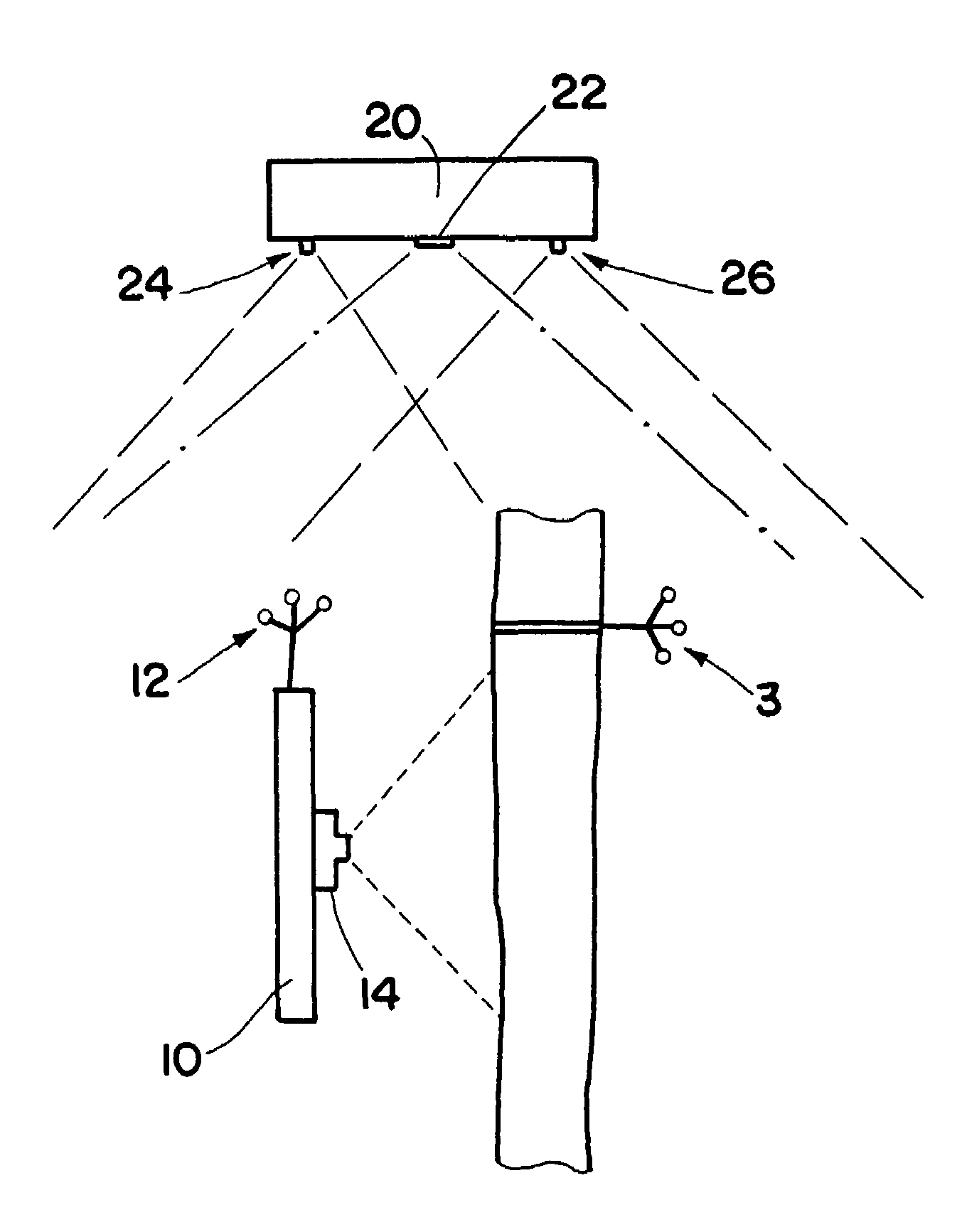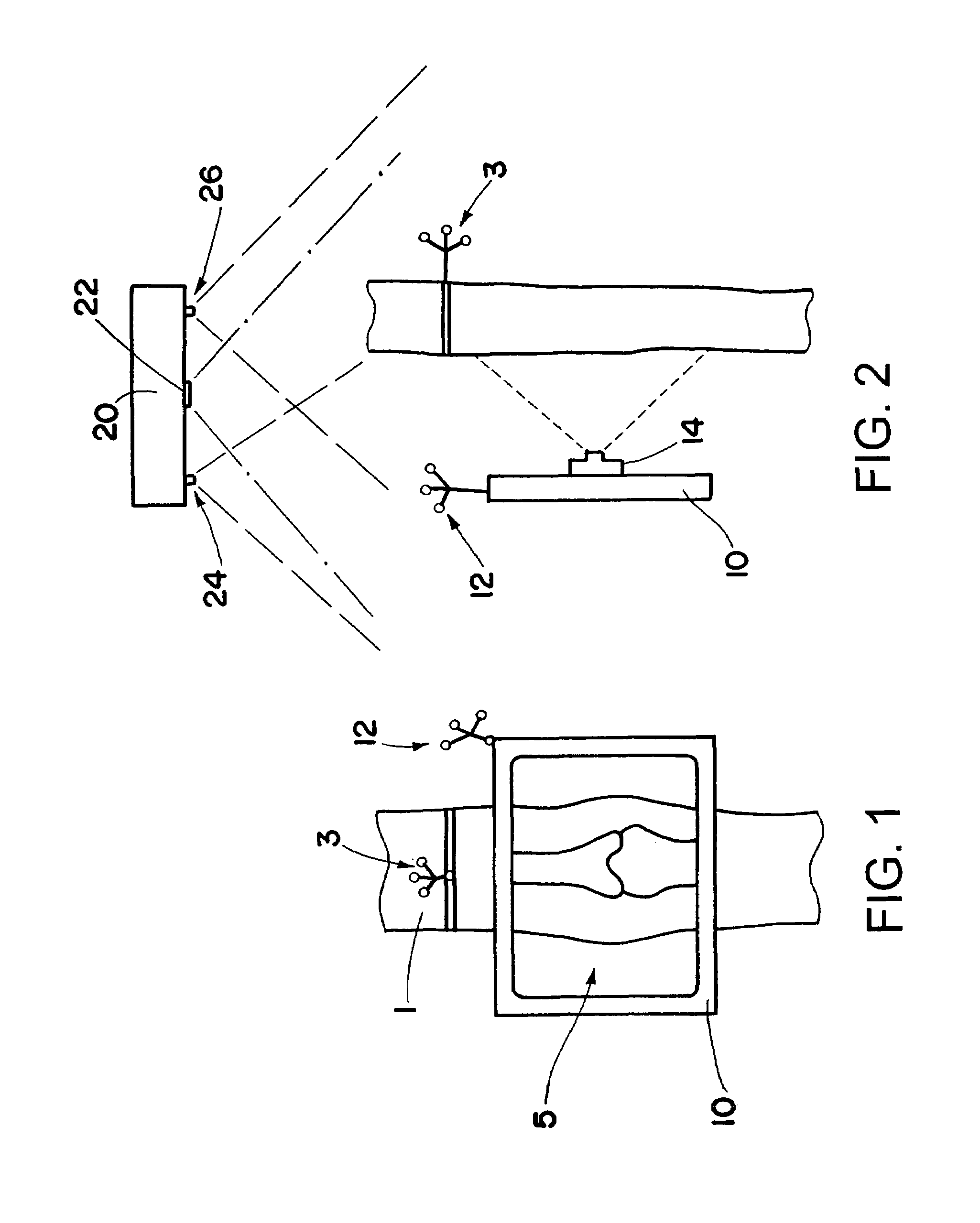Projecting patient image data from radioscopic imaging methods and/or tomographic imaging methods onto video images
- Summary
- Abstract
- Description
- Claims
- Application Information
AI Technical Summary
Benefits of technology
Problems solved by technology
Method used
Image
Examples
Embodiment Construction
[0018]FIG. 1 schematically shows a device in accordance with the invention, using which the interior of a patient's joint may for example be inspected. The leg 1 of the patient is to be examined at the joint 5. To this end, the flat screen 10 designed in accordance with the invention is held directly in front of the joint, and an image then appears on the screen 10 containing both image information from the video camera image of the camera 14 (FIG. 2) as well as image information on the interior anatomical structure, said information being communicated for example by a navigation apparatus, by radio. To this end, a tomographic image (MR or CT image) is produced beforehand of the patient or of the patient's leg 1.
[0019]As is indicated more clearly in FIG. 2, the camera 14 is situated, firmly attached, on the rear side of the screen 10.
[0020]This type of image representation is made possible by the spatial position of the camera 14 or of the image screen 10 being tracked around the le...
PUM
 Login to View More
Login to View More Abstract
Description
Claims
Application Information
 Login to View More
Login to View More - R&D
- Intellectual Property
- Life Sciences
- Materials
- Tech Scout
- Unparalleled Data Quality
- Higher Quality Content
- 60% Fewer Hallucinations
Browse by: Latest US Patents, China's latest patents, Technical Efficacy Thesaurus, Application Domain, Technology Topic, Popular Technical Reports.
© 2025 PatSnap. All rights reserved.Legal|Privacy policy|Modern Slavery Act Transparency Statement|Sitemap|About US| Contact US: help@patsnap.com



